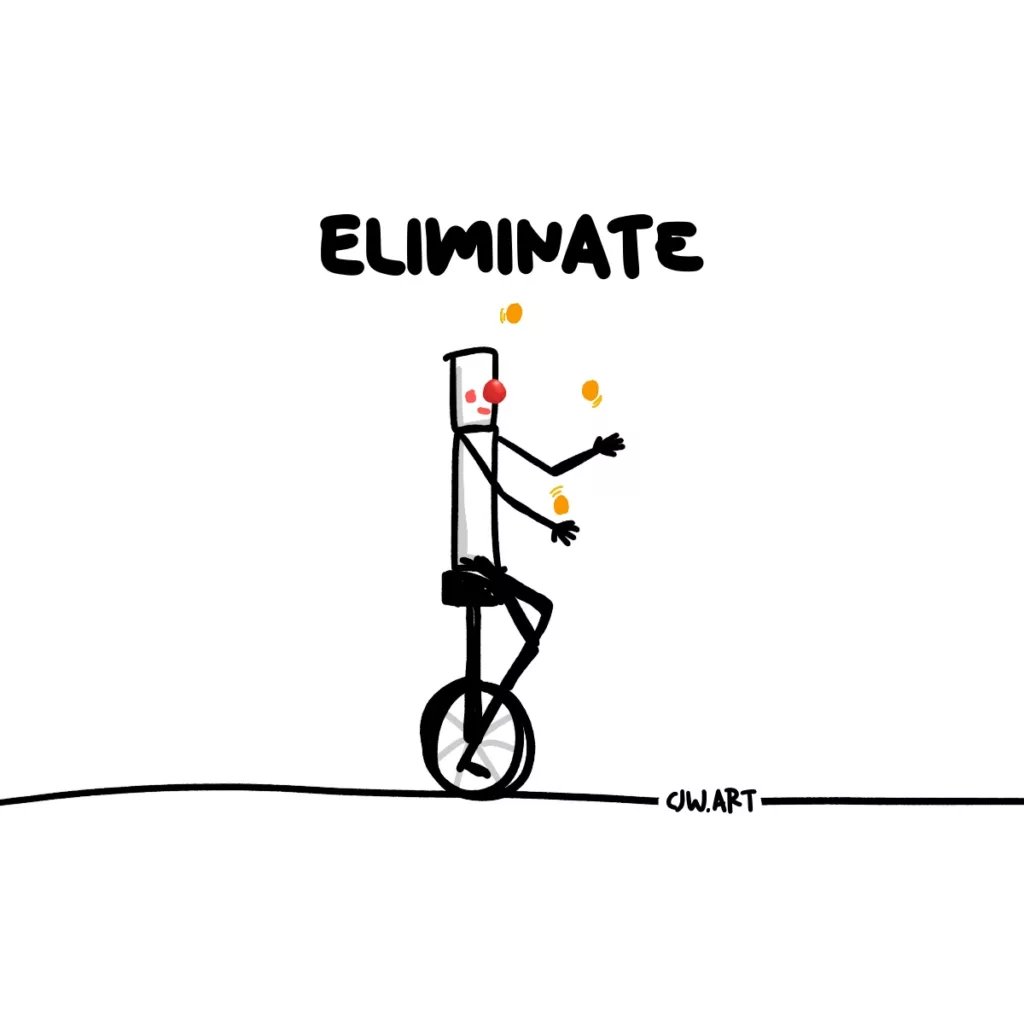A few weeks back I came across this framework used in design thinking to help individuals and teams come up with more innovative designs. Apparently, it’s been around since the 1950s but I had certainly never heard of it. What I like about it is that it gives you a series of checks to consider all aspects of a product or idea.
Perhaps this will be useful for you in your situations to help generate new ideas.
In this post, I’ll take you through each step of the process (with a few simple sketches (all with the example of a bike) to explain each one along the way).
Let’s dive in.
Substitute

Substitute is all about replacing certain parts of a product or idea with others.
For example, substituting wheels for skis on a bike. Is there a part of this product you could change for another? What opportunities could that open up?
Combine

Combining things comes naturally to many of us (it was one of my ideas in a previous post on how to have more creative ideas). You can combine two objects to make one, but it is more interesting to find two different ideas and concepts and combine them together.
When you encounter a new idea, it’s worth asking “How does this relate to my area?” That simple action might set you off on the next breakthrough.
Adapt

Adapting is about adjusting the current idea for a new situation or to improve its current usage. In the bike example, I’ve turned it into a tandem so two people can ride.
You might wonder why this isn’t “combine”, well, combine should be two different things but while this could be two bikes, it’s not a bike and something else. It’s also not the next item although it is similar as this requires more changes to do.
(I’ll just add here, that to me, it’s more important to think of things from different perspectives to get new ideas. If you happen to think “This is a combination” but it’s actually an adaption it’s the end of the world).
Modify

Modifying is about increasing or decreasing some existing part so that it can work in a new role. It’s different from adapting as adapting involves adding more or new things, and modifying involves increasing or decreasing what is already there. Hence the giant mountain bike wheels in the bike example.
Put to Another Use

The name says it all.
Many devices we have can be used for other purposes than they were originally conceived.
The classic example is to give a child a box.
It might be a car, a house, a rocket ship, a knight’s helmet, a (very large and somewhat clumsy) shield, and in extremely rare cases a device for storing objects.
Eliminate

People usually default to adding to a device to solve a problem, but removing can actually be more creative (and daring).
A classic example is bikes for kids. Many kids learn with training wheels (or stabilisers if you’re from the UK like me). These help keep the bike upright so kids can learn to pedal. The only problem? They fail to learn to balance (the trickier skill). They have to relearn this skill when they lose the safety wheels.
The alternative is balance bikes.

These are bikes without the chain and are propelled using the kid’s feet. These teach kids how to balance and turn so when they come to a normal bike, they just have to learn to pedal. This can usually be done in 20 minutes or so.
Another example from business might be removing a step in a process to make it more efficient.
Reverse/Rearrange

Probably the most confusing of the ideas but potentially the most useful. Reverse or rearrange is about changing the order of the product OR the challenge.
Imaging something working in reverse might highlight an aspect you don’t notice otherwise. This is similar to the backward chaining technique or inversion mental model.
My sister discovered how this might occur with bikes while studying in Sweden. There, the bikes didn’t have handlebar breaks. Instead, to break you peddled in reverse.
She had a couple of accidents as she adjusted!
Give it a go!
Going through the whole SCAMPER process can take some time, but is worth it for your main product or a key idea. It can also function as a quick check when you face a new challenge to rapidly consider different ways to solve the problem.
You don’t even need to use each step every time, you can try the ones you neglect the most.
Help others discover SCAMPER
If you’ve enjoyed this and found it useful, I’d love it if you help others do the same by
And if you want to make sure you get the next visual thread like this, join my visual newsletter here.

Leave a Reply